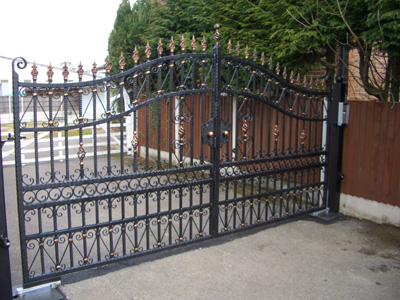When it comes to famous gates around the world, many people often forget about Buckingham Palace. After all, this grand building is one of the most popular, and profitable, tourist attractions in London which means that it is important to give it the recognition it deserves. In fact, the gates of Buckingham Palace hold a rich history that is filled with detailed artistry and incredible symbolism. Read on as the Cheshire Metalcraft team briefly analyse the gates which enclose Queen Elizabeth II’s place of residence…
Who?
At 107 years old, the gates of Buckingham Palace have required a lot of maintenance to keep them in the excellent condition they are in but it actually began back in 1905 when the Bromsgrove Guild of Applied Arts were given one of the most important tasks of the 20th century; designing the gates of Buckingham Palace. In fact, the company was well known for its wrought iron work at the time and also crafted Liverpool’s famous Liver Bird sculpture in 1910. Interestingly, the Bromsgrove Guild was founded just 7 years prior to the Royal commission in 1898 and their aim was to counteract the industrial demeanour of London by implementing bespoke and regal design.
Why?
Buckingham Palace was first inhabited by Queen Victoria in 1837 however they didn’t receive a perimeter for another 74 years until the Bromsgrove Guild designed, crafted and installed the gates we still visit in 2018. Whilst there is no official reason given for the gates, which were commissioned during the reign of King George V, it isn’t farfetched to consider that security was the likely incentive.
The Design
The railings and gates of Buckingham Palace are made from extremely strong and durable wrought iron that is routinely maintained in order to keep it in good condition. In fact, repairs are carried out on the gates on a regular basis. In addition to this, the gates are also adorned with a range of different sculptures including a Royal Coat of Arms that appears to be embellished with golden features. Interestingly, there is also the letter ‘G’ and roman numeral ‘5’ in calligraphy which is said to represent King George V and this can be found on the main centre gates.
It is no secret that the gates of Buckingham Palace are a spectacle to behold when you know what you are looking for. After all, many people tend to focus on the palace itself. Whilst our wrought iron gates here at Cheshire Metalcraft may not be as regal, they are certainly just as elegant! To find out more information about our wrought iron range, get in contact with the best gates in Manchester today!

